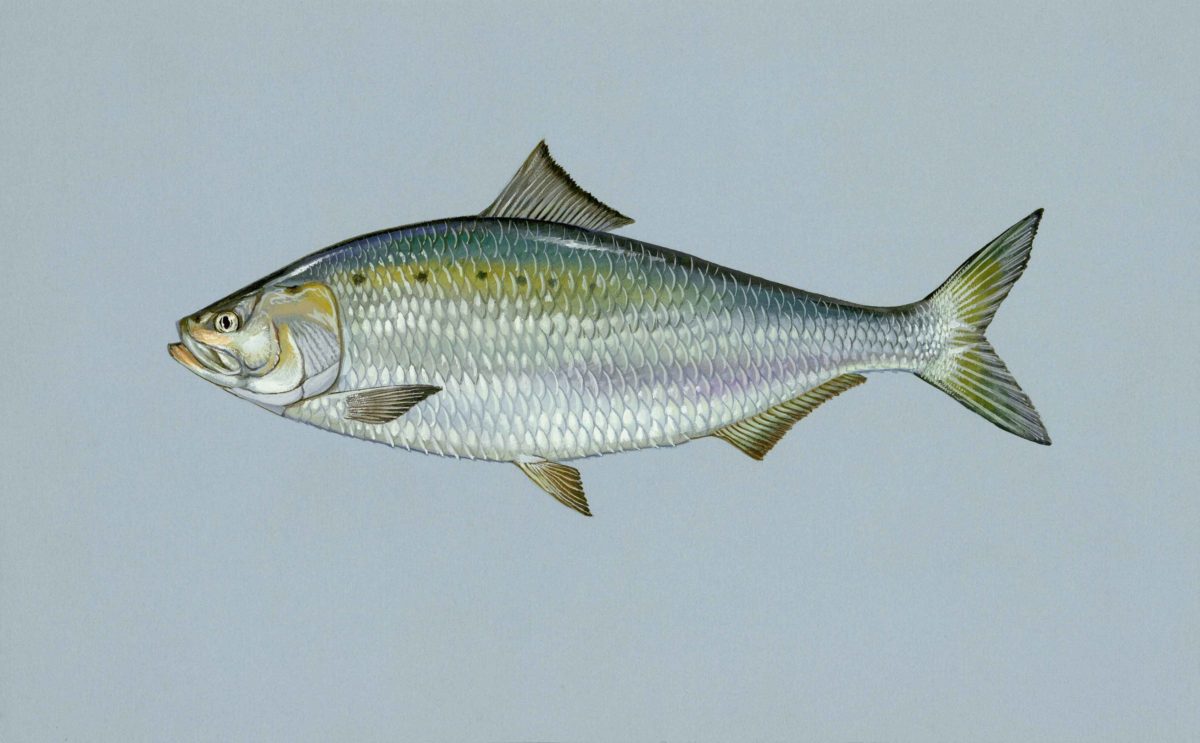Up and down the mid-Atlantic coast, the arrival of shad heading up rivers to spawn has been a sure harbinger of spring. In some areas there is limited commercial shad fishery, but shad are also prized by sport fishermen for their fight. While shad consumption has declined substantially over the past 50 years, traditionalists still value not only the roe, but also the flavorful flesh of this large cousin of herring. Like salmon, shad is a great source of healthy oils.
Shad roasts are a spring tradition in some states, especially Connecticut and Virginia. The shad are planked and cooked over an open fire much like salmon in the Pacific Northwest. The shad run begins in the south as early as January, and finishes around May in the North Atlantic states.
Shad fishery has declined in recent years as a result of shoreline development, the decline in demand, and the decline in the quality of water in our rivers, but if you can find a deboned piece of shad, it’s a real taste of American history.
I recommend fillets, because shad is one of the boniest fishes on the planet. According to Chef Jasper White, deboning requires 16 different incisions to remove the small bones. “This work was traditionally done by women in Connecticut and other places where there is a commercial shad run. In the old days, when the roe was normally purchased with the fillets, we used to wrap the roe in the fillets and cook slowly, basting with butter all the while.”
Adult shad are estimated to have more than 1000 bones, but that would vary depending on the size of the fish. (It is said to have been George Washington’s favorite fish but I’m guessing he didn’t have to bone them himself.) One of the earliest mentions of shad appeared in Amelia Simmons American Cookery published in 1796, and even a recent edition of The Fanny Farmer Cookbook (which originally appeared in 1896) offers one recipe for shad and one for shad roe.
For my money, unless you can get an invite to an old fashioned shad roast or find a supplier of fillets, the shad roe is the big payoff. Although it’s wise to handle them with care, they have a texture and flavor unlike anything else.
The twin lobes of eggs are found on either side of the abdomen and are surrounded by a delicate membrane, a bit like a sausage casing. Some cooks recommend gently parboiling the roe to help the packages keep their shape and to shorten cooking time. But whatever you do, cook gently. Handled roughly or at too high a heat, they can, well, explode. There are numerous recipes for shad roe online, and for some reason many include bacon, and some people eat their shad roe with eggs. We’ve provided a recipe below.
Where to Buy Shad Roe:
If you live along the Eastern seaboard of the United States and have a really great fishmonger nearby, he or she may be able to get it for you. The online providers are some of the best. But be very sure to call ahead or inquire online if you are planning a shad roe feast. The season is fleeting.
Charleston Seafood, Charleston, South Carolina
Owner Ron Manz is justifiably proud of his operation, and says they, “Literally ship to all 50 states. I recently shipped to a lady in Hawaii who hadn’t had shad roe in 30 years.” Visit www.CharlestonSeafood.com and feast your eyes, then your palate.
Browne Trading Company, Portland, Maine
This multi-generational wholesale and retail purveyor is one of the finest providers of fresh fish, seasonal delicacies and smoked seafood you’ll find anywhere. If you happen to be in town they’ve got the largest wine selection in Portland. www.brownetrading.com ![]()
First published April 2016
